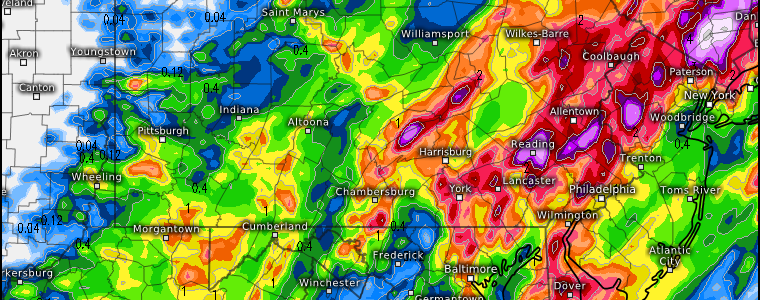
Widespread Flash Flooding Continues For The Northeast
As advertised in Armando’s blog from Friday, the Northeastern part of the country saw heavy rainfall that lead to multiple flash flood emergencies across the region yesterday.
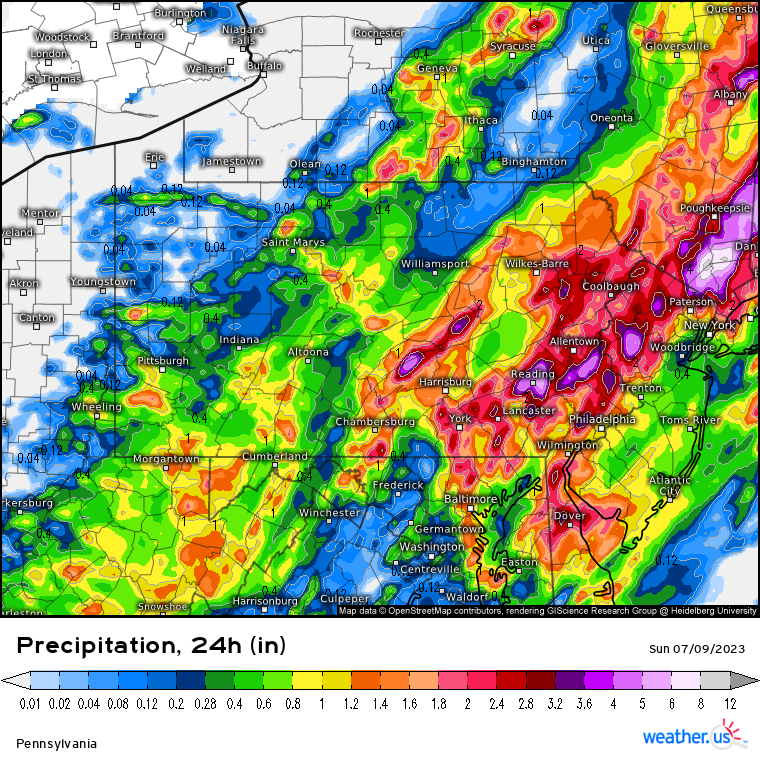
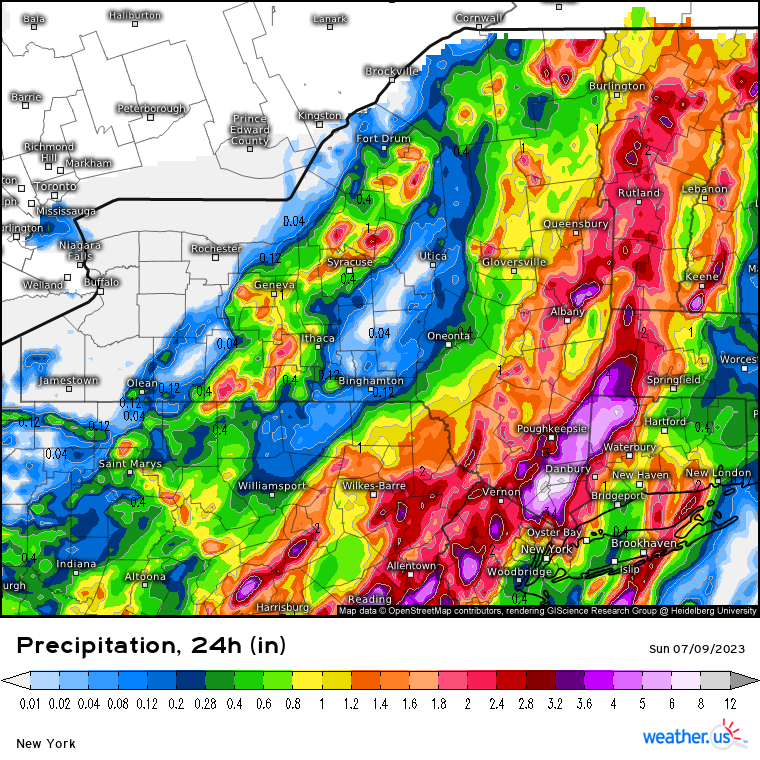
Radar-estimated rainfall totals from the last 24 hours (ending at 8 am Eastern) show incredible totals in areas in the lee of the Appalachians. Here, convergence and terrain worked together to produce round after round of slow-moving storms.
And it’s not over yet.
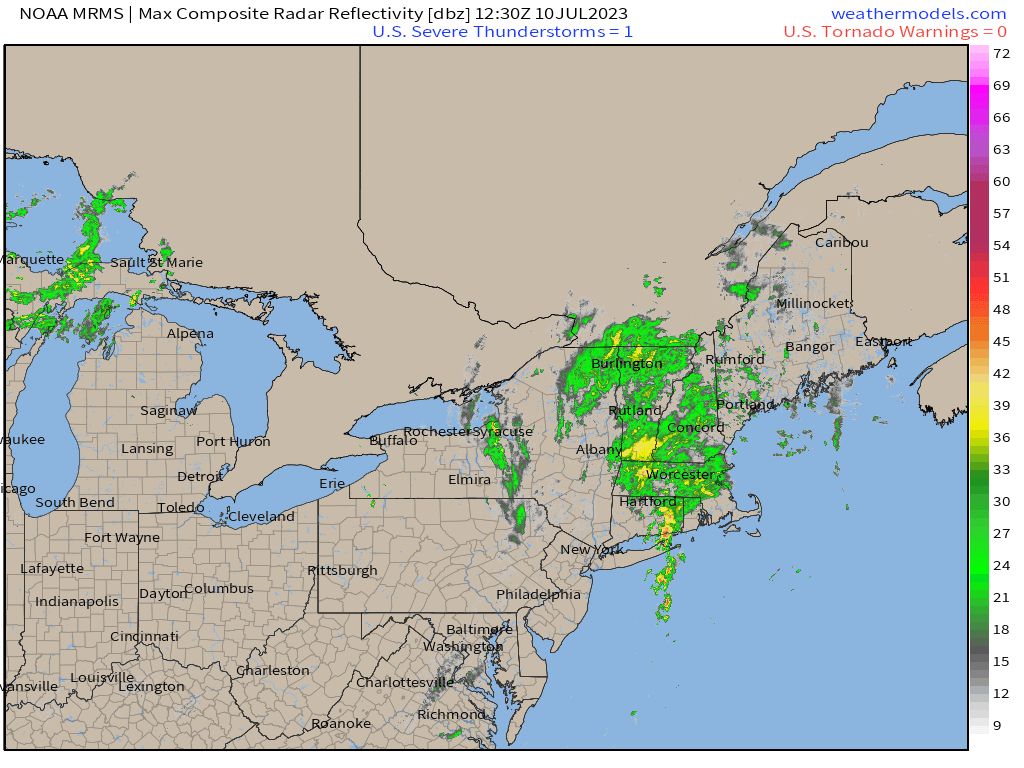
The heaviest rain has moved out of Pennsylvania, New York and New Jersey and is now focused in New England – specifically over Vermont, where much of the state is covered in flash flood warnings.
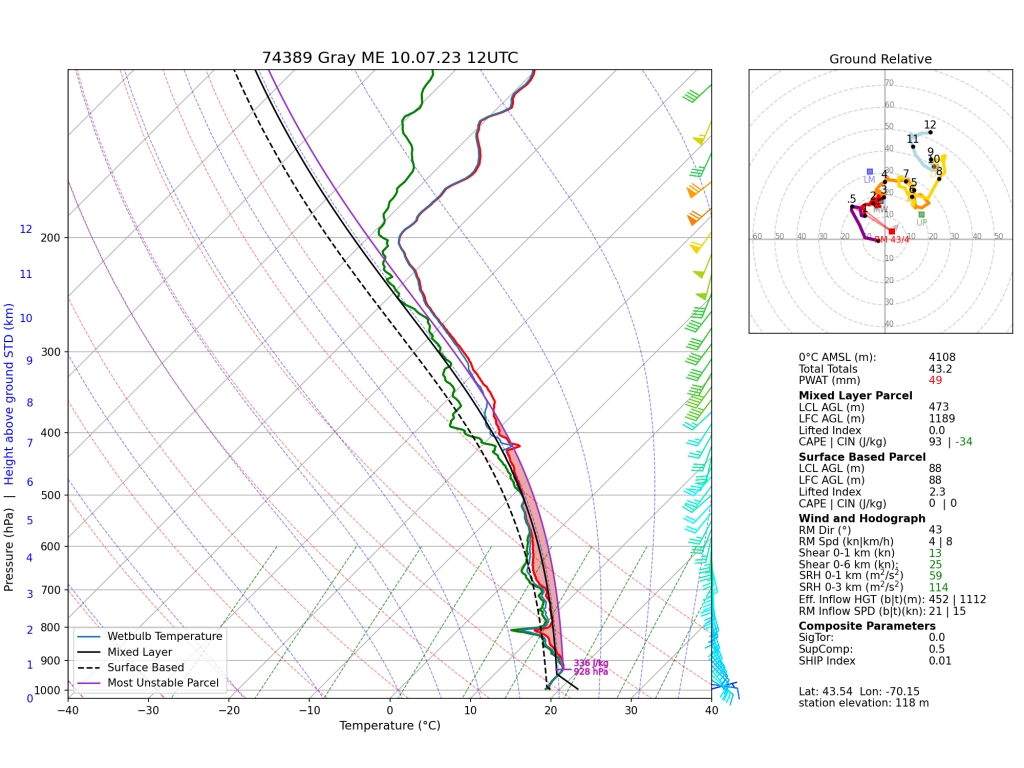
This morning’s observed sounding from nearby Gray, Maine shows an atmosphere that is saturated nearly to the Tropopause. Additionally, a small amount of CAPE exists and allows enough instability to keep fueling this event.
Further, the observed PWAT value (listed in the stats on the side) is 49 mm, which roughly converts to 2 inches. Notice the Southeasterly flow in the lower levels. This nearly-tropical moisture is being advected in off of the anomalously warm Atlantic and is fueling these heavy downpours.
Let’s not forget the role terrain plays.

A lower level flow out of the SSE hits the Green/White Mountains of New England (local names for that portion of the Appalachians) at a nearly perpendicular angle. The flow is then forced to lift over the mountains. As it does so, moisture in that air is mechanically lifted to the LCL where it can then condense into clouds and fall as rain. This enhances the rainfall totals for the region.
Simply put: due to Orographic Lifting (the process described above) more rain will be forced out of the atmosphere, adding to already-high totals.
It’s no surprise then that the WPC has defined a High Risk for flash flooding in this region today. In fact, as I stated early, it is already occurring.
It is extremely important to remain aware of conditions if you must be out driving today. Things can become life-threatening quickly. Be aware of alternate routes in case you should need them.
Most importantly: do NOT drive through floodwaters. It takes as little as 12 inches to float a car. Additionally, depth can be deceptive and the road may be washed out underneath. The risk is not worth your life.
Stay safe out there today!











